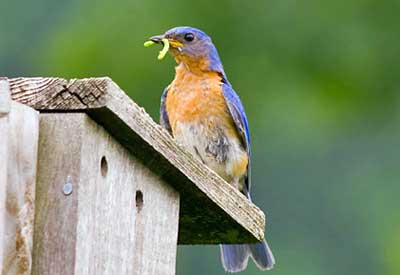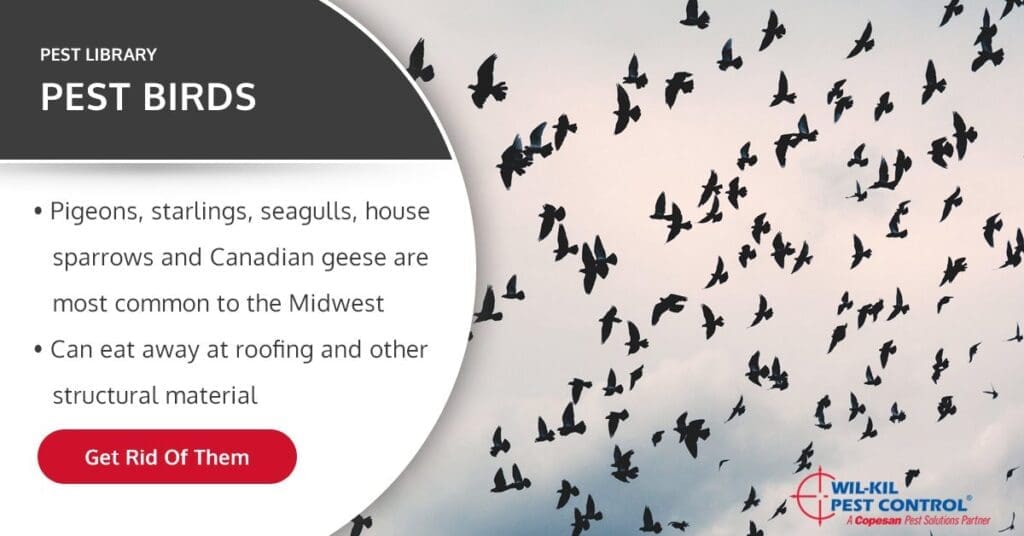Birds play an essential role in pest management by preying on insects, rodents, and other pests that can wreak havoc on crops and homes. These winged warriors provide a natural and eco-friendly alternative to chemical pest control methods, keeping the ecosystem in balance. From the daybreak chatter of songbirds to the stealthy hunters of the night, this article explores the incredible ways in which birds contribute to pest control and offers insights on how to attract and support these feathered allies in your backyard. So, grab your binoculars and get ready to discover the hidden heroes of pest management.

1. Introduction
Birds are not only beautiful creatures that enhance the natural environment, but they also play a vital role in pest control. As natural predators, birds help to keep pest populations in check by feeding on insects, rodents, and even snakes. In this article, we will explore the various types of birds that serve as natural pest controllers and discuss the benefits they bring to pest management. We will also delve into examples of bird pest control methods and how you can attract birds to your surroundings for effective pest control. However, it is important to understand the limitations and challenges associated with using birds as a primary pest control method. So, let’s dive in and discover the incredible role that birds play in keeping pests at bay.
2. Birds as Natural Predators
2.1. Birds that Eat Insects
Several bird species are known for their insatiable appetite for insects. Swallows, for example, are highly efficient insect hunters and can consume large quantities of mosquitoes, flies, and beetles in a single day. Other insect-eating birds include warblers, wrens, and flycatchers. These birds are equipped with sharp beaks and agile flight abilities, allowing them to snatch insects mid-air or forage in shrubs and trees. By preying on insects, these birds contribute to the control of pests that can damage crops and spread diseases.
2.2. Birds that Eat Rodents
Rodents, such as mice and rats, are notorious pests that can cause significant damage to homes, crops, and infrastructure. Fortunately, there are birds that have evolved to include rodents in their diet. Birds of prey, including owls and hawks, are known for their ability to hunt and capture rodents with precision. Owls, with their silent flight and exceptional night vision, are particularly effective in controlling rodent populations. They can consume several mice or rats in a single night, making them invaluable assets in pest management.
2.3. Birds that Eat Snakes
Snakes can be a cause of fear and concern for many people, especially when they pose a threat to human safety or agricultural activities. However, some bird species have developed an impressive knack for hunting and consuming snakes. Birds like the secretary bird and the roadrunner have adapted to consume venomous snakes without being harmed. These birds use their long legs and sturdy beaks to immobilize and devour snakes, thereby helping to control snake populations and reducing the risk of encounters with these reptiles.

3. Benefits of Birds in Pest Control
3.1. Decreased Pest Populations
One of the most significant benefits of birds in pest control is their ability to decrease pest populations. By feeding on insects, rodents, and snakes, birds help prevent these pests from reproducing and spreading. This decrease in pest populations directly translates to a lower risk of damage to crops, homes, and human health.
3.2. Reduced Need for Chemical Pesticides
The presence of birds as natural predators can significantly reduce the reliance on chemical pesticides. Chemical pesticides can have detrimental effects on the environment, non-target species, and human health. By using birds for pest control, farmers, homeowners, and pest management professionals can reduce the need for these harmful chemicals, leading to a more sustainable and eco-friendly approach to pest management.
3.3. Prevention of Crop Damage
Birds, especially those that eat insects and rodents, play a crucial role in preventing crop damage. Insects and rodents can ravage crops, leading to significant economic losses and reduced food production. By keeping pest populations in check, birds help to protect crops from infestations, ensuring higher yields, and contributing to food security.
4. Examples of Bird Pest Control
4.1. Owl Boxes in Agriculture
In agricultural settings, implementing owl boxes has become a popular method of utilizing birds for pest control. Owls are formidable predators of rodents, and by providing them with suitable nesting sites, farmers can encourage their presence on their land. The owls, in turn, help control rodent populations, reducing the need for chemical pesticides and protecting crops from potential damage.
4.2. Poultry in Integrated Pest Management
Poultry, such as chickens and ducks, can be integrated into pest management strategies. These birds are not only a source of fresh eggs or meat but also excellent foragers. They consume a wide range of insects, including pests that feed on crops. By allowing poultry to roam in agricultural areas, farmers can harness their natural pest control abilities while benefiting from the production of eggs or meat.
4.3. Falconry in Urban Areas
In urban areas where pigeons and other nuisance birds can cause problems, falconry has emerged as an effective bird pest control method. Trained falcons are used to deter or disperse unwanted bird populations. The presence of the falcons and their ability to swoop down on other birds creates a natural deterrent, reducing bird-related nuisances without harming the birds themselves. This humane method allows for better management of bird populations in urban environments.

5. Attracting Birds for Pest Control
5.1. Providing Food Sources
To attract birds for pest control purposes, it is essential to provide them with abundant food sources. Planting native plant species that produce berries, seeds, or nectar can attract a variety of insect-eating birds. Additionally, installing bird feeders and offering appropriate bird feed can supplement their diet. Birds require a diverse range of nutrient-rich foods, so providing a variety of options will ensure their sustained presence and effectiveness in pest control.
5.2. Creating Bird-Friendly Habitats
Creating bird-friendly habitats is another effective way to attract birds for pest control. Birds need suitable nesting sites, cover for protection from predators, and a water source for bathing and drinking. Planting trees, shrubs, and native plants can provide ample nesting opportunities and cover. Incorporating bird baths or small water features can also help attract birds. By creating a welcoming environment, you can encourage a diverse range of bird species to establish themselves and actively contribute to pest control efforts.
6. Challenges and Limitations
6.1. Competition with other Pest Control Methods
While birds can provide valuable assistance in pest control, they are not always the sole solution. Other pest control methods, such as chemical pesticides or traps, may be necessary to tackle specific pest infestations. Integrating bird pest control with other methods can ensure comprehensive pest management while minimizing potential drawbacks associated with each method.
6.2. Potential Damage to Crops
Although birds are instrumental in preventing crop damage, certain species can also cause harm. For example, some bird species, like crows or starlings, may feed on crops or peck at fruits, causing losses for farmers. It is essential to strike a balance between attracting beneficial birds for pest control and mitigating potential crop damage by employing additional measures like netting or scare tactics.
6.3. Birds as Pests Themselves
While birds serve as effective predators, they can also become pests themselves in specific situations. For example, certain bird species, like pigeons or seagulls, are known to cause problems in urban areas, damaging buildings or creating unsanitary conditions. It is crucial to identify the appropriate bird species for pest control and ensure that they do not become a nuisance themselves.

7. Conclusion
Birds are incredible allies in the battle against pests, offering numerous benefits in pest control. From devouring insects to keeping rodent populations in check, their natural predatory instincts are highly effective. By attracting birds to our surroundings through food sources and suitable habitats, we can harness their pest control abilities and reduce the reliance on chemical pesticides. However, it is essential to be aware of the challenges and limitations associated with bird pest control methods, ensuring a well-rounded approach to pest management. So, embrace the presence of these feathered friends, create bird-friendly environments, and enjoy the benefits they bring in maintaining a pest-free environment.

I am Randy, the author behind PestControld.com. Drawing from decades of experience, I aim to provide valuable insights, expert advice, and practical recommendations to help you make informed decisions when assessing viable pest control solutions.